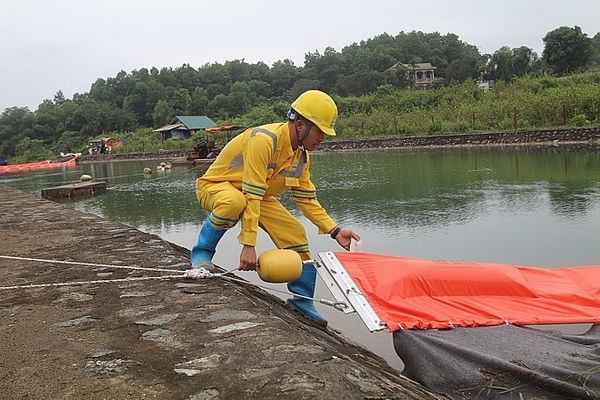 |
| People get free water at Ha Dinh Water Supply Plant as water supply to their houses was disrupted due to a broken pipeline of Da River Water Supply Plant in October last year. — VNA/VNS Photo Minh Son |
Thang said that the water plants would also develop scenarios to deal with problems that disrupt the water supply, for example, broken pipelines or reduced pressure that causes difficulties in pumping water.
He also said that if the water pipeline from the Da River Surface water plant – a major water supply source for Hanoi – was broken, relevant agencies would be mobilised to fix the problem in a maximum of 10 hours for a single location of the broken pipeline.
The water supply would resume as soon as possible, he said, adding that during the pipeline maintenance, other water supply plants in the city would take over to supply water for affected areas, including inner districts of the city.
On Sunday, Song Da Water Investment Joint Stock Company announced that it detected a broken pipeline on Thang Long Boulevard in Ngoc Liep Commune, Quoc Oai District and by Monday, the problem was fixed.
This is the first time the pipeline broke this year, but last year, it broke four times. Between 2012 and 2016, the pipeline reportedly broke 21 times, affecting 177,000 households.
Until last October, concentrated water supply plants in Hanoi were able to supply 1.52 million cubic metres of water per day, about 623,000cu.m more than that of 2016.
The Construction Department estimated that the city’s water demand in this summer could peak 1.25-1.3 million cubic metres per day, meaning that water supply plants could meet demand.
However, some areas in Hanoi, particularly rural areas, are still likely to face shortages of clean water in summer due to unfinished projects in the city.
Due to the changes in investors and designs, some items in the second phase of the construction of Da River Water Supply Plant have been delayed, for example, pipes and tanks.
Meanwhile, the Hong (Red) River Water Plant Project cannot be carried out as the municipal People’s Council has not approved a land use plan for the construction of the factory’s pipeline. Compensation for land users who have to move their houses or premises to make room for the water pipeline have not been clarified with detailed instructions from authorities.
The construction of water pipeline systems in rural areas in Hanoi are also delayed, particularly the system in three communes – Xuan Phu, Van Nam and Van Phuc in Phuc Tho District, and the system in eight communes in Quoc Oai District.
According to the city’s Department of Construction, about 75 per cent of households in Hanoi’s rural areas have access to tap water while the percentage in the city’s urban areas is almost 100 per cent.
Meanwhile, the city targeted that by the end of this year, all households in both urban and rural areas across the city can use tap water. VNS

Clean water petition in Hanoi
The Hanoi People’s Committee has assigned Aqua One JSC to conduct a clean water plant project for residents in the southwest of the city.

Hanoi to hire consultant for clean water pricing
The independent consultant will assess the quality of water intake and calculate production costs of waterworks.
 Water plants in Hanoi were asked to implement measures to ensure supply for the city during summer when demand for water usually increases, said Deputy Director of the city’s Construction Department Hoang Cao Thang.
Water plants in Hanoi were asked to implement measures to ensure supply for the city during summer when demand for water usually increases, said Deputy Director of the city’s Construction Department Hoang Cao Thang.